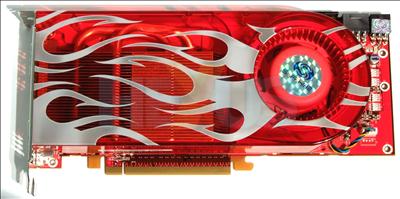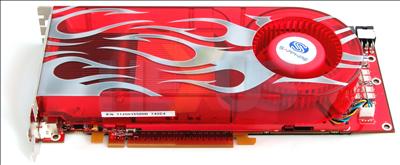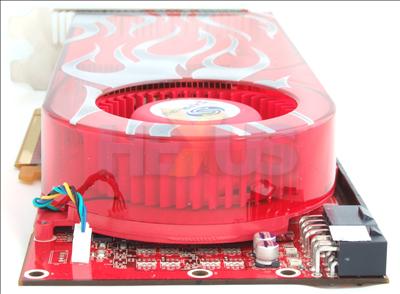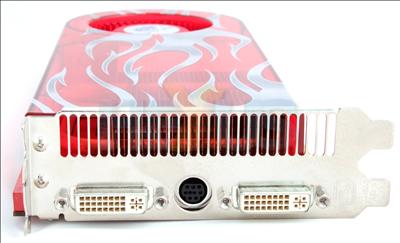Card appearance and thoughts
Somewhat blatantly, Sapphire's Radeon HD 2900 XT is based on the reference design. As such, the only difference between it and a gaggle of other cards is the sticker on the heatsink: this one reads Sapphire. It's clocked in at the reference 743MHz core and 1656MHz memory, as well.
Our look at the reference model indicated that the copper heatsink's fan modulated in pitch when placed under 3D load. The modulation appeared to be a driver issue, and we commented on just how long it would take for AMD and its partners to fix the problem. Two driver revisions on and the Sapphire exhibits the same pitch-related problems, with the fan, somewhat annoyingly, speeding-up and slowing down: it's a sure-fire method of driving you mad! We reckon that HD 2900 XTs need a new BIOS to eradicate this issue.
The underlying R600 GPU carries a full DX10-supporting architecture. 700m transistors are tasked with providing the unified graphical grunt, so it's no surprise that the card weighs almost 1kg - be sure to strap it in to the x16 PCIe slot with care; you don't want it falling on other cards in your system.
The need to drive such power is manifested by the presence of both six-pin and eight-pin PCIe power connectors. It's abundantly possible to run the Sapphire HD 2900 XT with two six-pin connectors from your PSU, which'll provide a maximum of ~225W once the x16 PCIe slot's power is taken into consideration. AMD, however, plays the power game safe and includes the eight-pin connector (150W) for those who wish to indulge in some heavy overclocking.
We need to stress that a high-quality power supply is a must if you're considering adding any truly high-end card to your current system - be it NVIDIA's G80 or AMD's R600; the card's are the single most power-hungry component in a regular system. That advice, of course, goes double if contemplating multi-GPU setups.
The GPU-transferred heat is ferried to the back of the card and blown out of the rear.
Both DVI ports are dual-link and also support dual-link HDCP. R600 hardware also includes an audio passthrough that's integrated into directly the GPU. Once activated by the installation of CATALYST drivers, your motherboard's audio can be fed through to the card and exported by the DVI ports on the rear, facilitated by a DVI-to-HDMI adapter that ships with the package. In effect, the Radeon HD 2000 series becomes a one-stop multimedia shop for those that want to hook-up their PC to, say, an LCD TV and wish to carry both audio and video in one cable. We note, however, that the HDMI is v1.2, meaning no Dolby TrueHD or DTS-HD Master Audio stream passthrough.
We also note that the installation of said drivers makes the HD 2900 XT the default audio device, so novice users may wonder just why they can't export audio from their motherboard's ports after installation - it's something to be wary of, folks.
The rear doesn't highlight much, really. The card's 512MiB of GDDR3 RAM is situated on the topside. Remember, though, that it interfaces with the GPU via a 512-bit pathway, and simple maths tells us that there's over 100GB/s of potential bandwidth on tap.
The reference design, replicated here ad nauseam, also features a basic VIVO ASIC, too.














